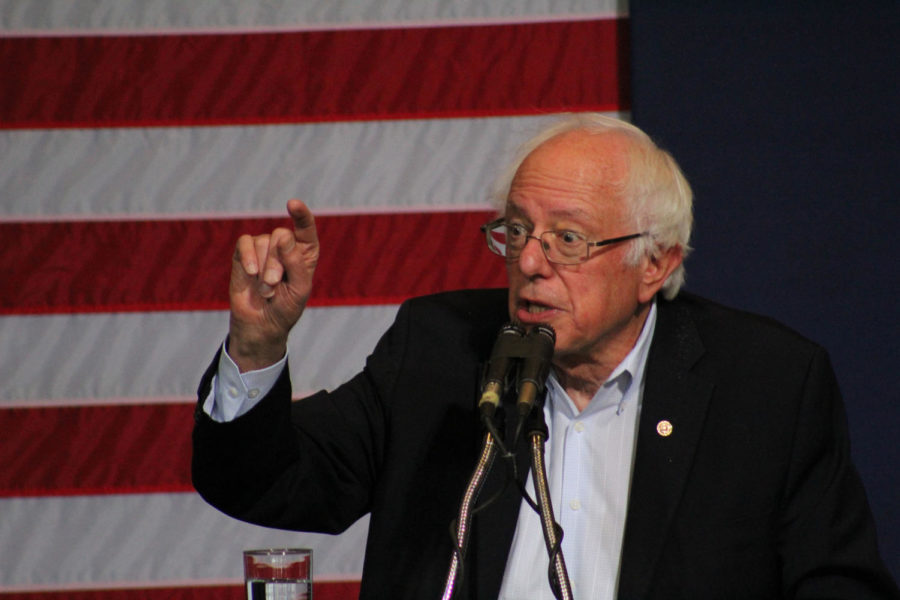Bernie Sanders announces campaign for president, student group backs decision
Kennedy DeRaedt/Iowa State Daily
Bernie Sanders came to Iowa State University Nov. 5 to campaign for Hillary Clinton. The “Ames Get Out the Vote Rally with Bernie Sanders” was held in the Scheman Building.
February 19, 2019
Bernie Sanders is making another run for the presidency.
Sanders announced his candidacy in an early-morning email to supporters on his fundraising list. Within four hours of the announcement, the Sanders campaign reported that more than $1 million had been raised.
The independent senator from Vermont ran for the Democratic presidential nomination in 2016 against Hillary Clinton, making a deep run into the primary. Sanders received strong support from college-aged voters. In the 2016 primary, Sanders received the votes of 86% of Iowa caucus-goers aged 17-24, according to CNN exit polls.
Prior to his entrance to the race Tuesday, a movement sought to draft Sanders into the already crowded field for the Democratic party nomination.
Historically, movements to draft candidates intended to help nominate candidates perceived as electable. The movement to draft Sanders did not focus on perceived electability; however, supporters of his would-be candidacy are quick to note that early polls of a general election matchup between Sanders and President Trump show the independent from Vermont leading Trump by large margins.
Instead, those who urged Sanders to run are primarily policy focused, said Ashton Ayers, a junior at Iowa State University who is among those who circulated petitions as part of Students for Bernie — a national grassroots movement to encourage Sanders to enter the race.
Ayers said those who were circulating the petitions are “all very excited about the announcement” that Sanders is making another run.
A member of the Democratic Socialists of America, Ayers said Sen. Sanders espouses a platform that would establish a social democratic system in the United States in the model of the Nordic countries. Sanders himself frequently brings up Denmark as an example of a country he would like the United States to model.
Ayers said the appeal of Sanders is not about any personal charisma that the senator may have, but his policy proposals. He likes that Sanders is a reactionary — that he challenges the status quo.
While Sanders appeals to some based on policy, Ayers said Sanders can not be completely described with normal methods. For example, some traditional methods of ranking elected officials’ ideologies failed to accurately place Sanders on a political scale. Ayers mentioned that one system actually places Sen. Kamala Harris (D-Ca.) and Sen. Cory Booker (D-N.J.) to the left of Sanders on economic policy.
Sanders unabashedly espouses Democratic Socialism, a position that, until recently, would end a presidential campaign before it started in the United States. A 2018 Gallup survey found that a majority (51%) of Americans aged 18 to 29 viewed socialism positively, while only 45% view capitalism positively.
Alex Tuckness, a professor of political science at Iowa State University, said that without increased polarization and partisanship Sanders could not be considered a serious candidate.
Tuckness said socialism and redistributive policies are not seen as negatively as they had been for multiple reasons, noting not only that Sanders has branded socialism in terms of tuition-free college and free health care among other campaign promises, but also that young people today have little or no memory of the Soviet Union and after the Great Recession many young people may not have as much faith in the market’s ability to solve problems.
There has been increasing wealth and income inequality in the United States for decades. Tuckness said in the shadow of the Great Recession, many young people had formative experiences in the aftermath of a financial crisis and historically calls for redistributive policies grow more popular after financial crisis and in times of increasing income inequality, as was the case with FDR’s New Deal.

















